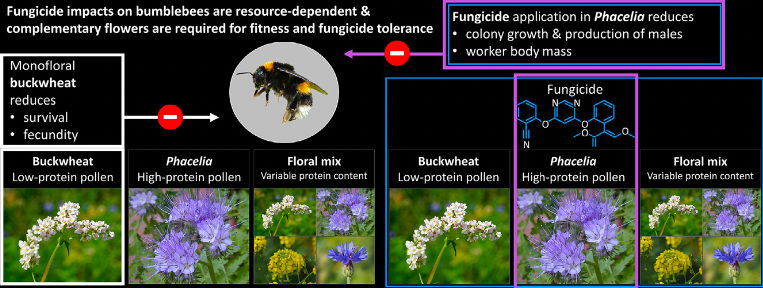pan-european assessment, monitoring, and mitigation of stressors on the health of bees
Are the impacts of a common fungicide dependent on flowering resources?
Despite potential interactions between stressors, such as pesticides and lack of flowering resources, the impacts of pesticides on bees are generally assumed to be consistent across bee-attractive crops, and pesticides regulatory risk assessments neglect interactions with flowering resources. In a new PoshBee research article, called Flowering resources modulate the sensitivity of bumblebees to a common fungicide, scientists set out to find if the type of flowering resource in fact does alter the fungicides’ impacts on bees.
In order to answer that question, researchers conducted an experiment to assess the single and combined impacts of the globally used azoxystrobin-based fungicide Amistar® and three types of flowering resources (Phacelia, buckwheat, and a floral mix) on Bombus terrestris colonies.

Graphical abstract for the Wintermantel, D., et al. (2022) article
And although Amistar is classified as bee-safe, researchers found that its impacts on bumblebees largely depend on the forage plant on which it is applied. For example, when applied to buckwheat or floral mix cages, it had no impact on colonies. In contrast, adult workers feeding exclusively on Phacelia exposed to Amistar, suffered reductions in body mass and colony growth. This shows that bumblebees require access to complementary flowering species to gain both fitness and fungicide tolerance and that Amistar impacts are flowering resource-dependent.
These findings call for further research on how different flowering plants affect bees and their pesticide tolerance to improve guidelines for regulatory pesticide risk assessments and inform the choice of plants that are cultivated to safeguard pollinators.
Read the full article here.